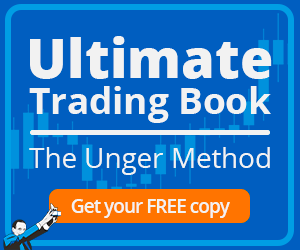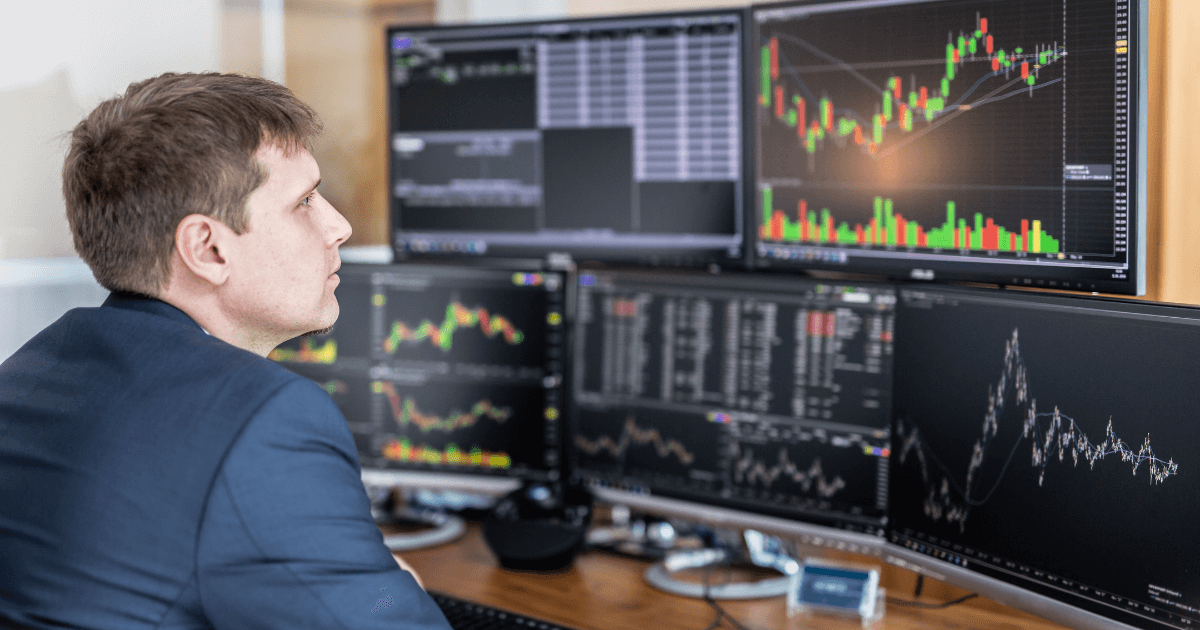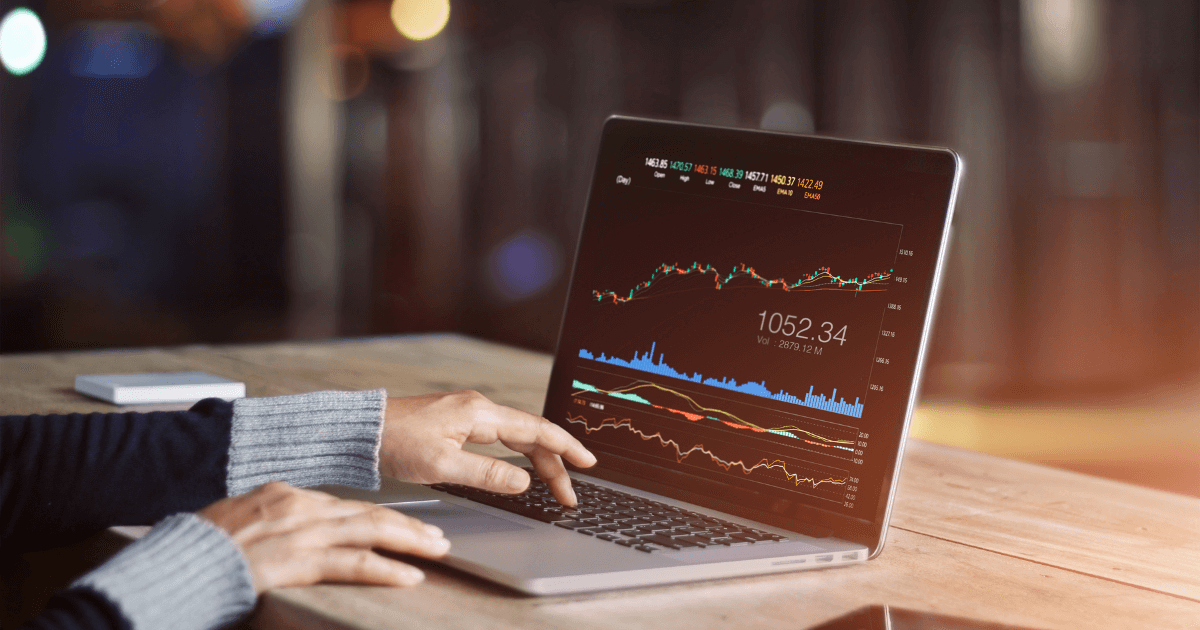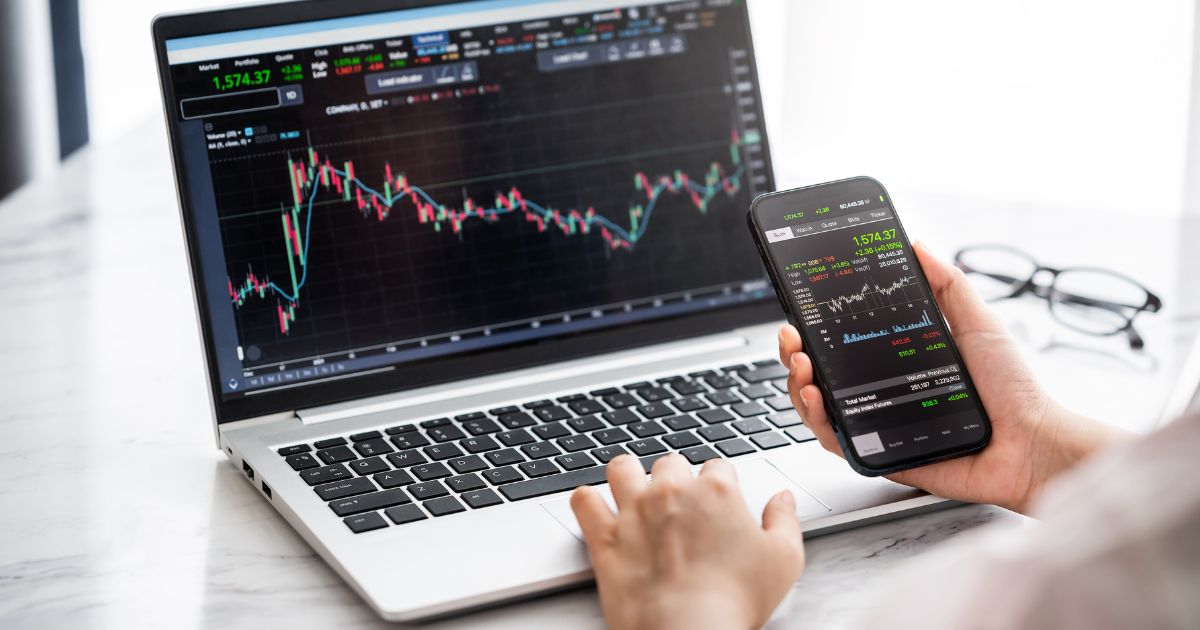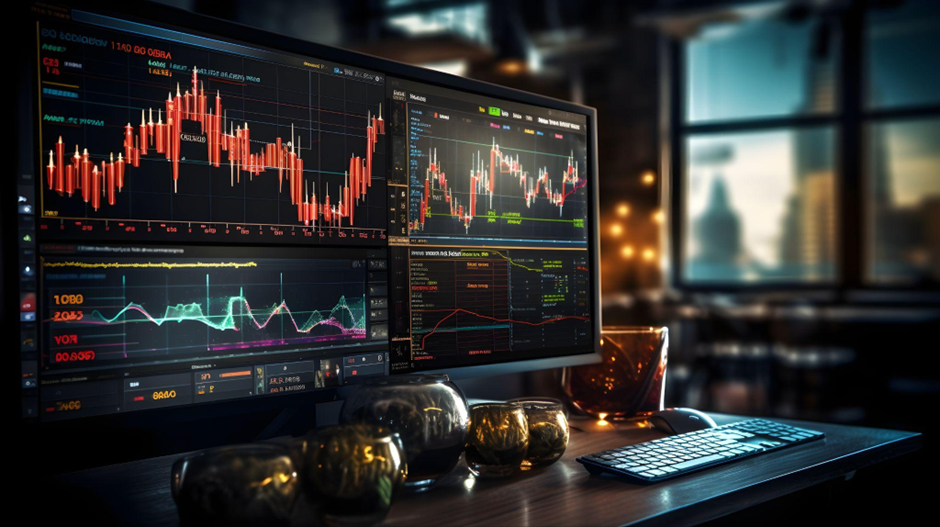The first step to trading properly is learning the jargon of the trade. It sounds trivial, yet many traders neglect this aspect and start trading the markets without proper awareness and mastery of basic terminology.
This can be very dangerous.
Like any serious profession, trading has its own rules and technical language; make sure you’re familiar with all these terms before you invest your capital!
Basic Trading and Financial Market Terminology
Anti-martingale
The strategy of decreasing an instrument’s value after a losing trade and increasing it after a successful trade. Compared with the martingale strategy, the anti-martingale allows for better risk management and greater protection of the trading account.
ASK
In trading, the term “ask” means the selling price of a financial instrument. The opposite of an ask is a “bid“.
Asset
In trading, the term “asset” means anything traded in a financial market, including stocks, bonds, currencies, and commodities. In a broader sense, the word “asset” can also mean a resource that is owned or controlled by a company.
Average Cost
The “average cost” is the average price of a given asset.
Average True Range (ATR)
An indicator used in technical analysis to measure the volatility of a financial instrument (stock or index). The ATR makes it possible to calculate the average price range in which a stock is traded.
Averaging Down
A strategy of buying an asset when the average price is falling with the hope of making a profit once the price of the asset goes back up.
Averaging Up
A strategy that involves buying an asset when the average price is rising, hoping that the price of the asset will continue to rise.
Bar Charts
Type of chart that displays essential information such as, the opening/closing price of a particular financial instrument at a specific time interval.
Bear/Bearish Market
The term “bear market” refers to a weak market. “Bear” traders trade the market expecting the price of particular stocks or securities to go down. Therefore, bear traders tend to sell their bullish positions or take short positions.
Bias
In finance, the term “bias” denotes certain repetitive and statistical behaviors of a market. Depending on the time horizon considered, it’s possible to have intraday, intraweek, intra-month, or seasonal biases. Read this article to learn more.
Bid (offer)
The term “bid” in trading means the price an investor is willing to pay to buy a financial instrument. The opposite of the bid is the ask, which is the asking price.
Binary Option Account
Accounts that are used to bet “against the price of a stock.” The investor bets that a stock will be above/below a certain price within a certain time. Instead of trading, the investor is betting on the value of the stocks. This type of account isn’t regulated and is illegal in many countries.
Bollinger Bands
Bollinger Bands (named for their originator, John Bollinger) are one of the most widely used indicators in technical analysis. They consist of three lines on a chart, indicating three price bands. The middle line expresses the simple moving average of the price (by default, the 20-period moving average). The upper line is the standard deviation of the price to the moving average, while the lower line measures the simple moving average minus the standard deviation. The upper and lower Bollinger bands measure the dispersion of the price around the mean value and thus allow the calculation of volatility. Read this article to learn more.
Borrowing
Borrowing is an operation used by traders to increase possible gains by borrowing stocks from brokers. This type of practice is widely used in short strategies.
Broker
An independent professional or company that executes transactions on behalf of a third party (usually a trader). The broker trades on different assets, for example, futures, forex, stocks etc. and executes orders (market, limit, stop) given by the trader, who he charges for commission. Read this article to learn more.
Bull/Bullish
The term “bull” or “bull market” refers to a rising market. It can also be used to refer to a specific position the trader is taking. “Bull” traders trade hoping that the stock will go up.
Candlestick Chart
The most widely used type of chart, especially by intraday traders. This type of chart allows you to synthesize multiple pieces of information, such as the opening price, closing price, the highest price of the period, and the lowest price of the period. The combination of this information provides insight into investor sentiment and provides a clear picture of how markets are moving.
Cash Account
When trading in a cash account, the amount of money in the account corresponds to the amount deposited. Unlike the “Margin Account,” only the cash available in the account can be used for trading.
CFD Account
CFDs (“Contracts for Difference”) are unregulated derivative products that replicate the performance of various financial assets, from commodities to stocks. Those who buy a CFD, therefore, buy a contract that can be resold when the price of the underlying asset rises to make a profit. CFDs are traded through contracts called “lots.” The scalability of the contract varies depending on the value of the underlying asset. CFDs are leveraged products and, therefore, can be very risky if not managed properly.
Circuit Breaker Halts
“Stock exchange circuit breaker halts” are instruments approved by the Securities and Exchange Commission (SEC) to curb panic selling on U.S. stock exchanges. They apply both to broad market indexes such as the S&P500 and to commodities (which have much looser limits than stock indexes). Circuit breakers temporarily halt online trading when prices reach predefined levels, such as a 14% intraday drop for the S&P500 or a 15% increase in a company’s stock price within five minutes. A Circuit Breaker Halt occurred recently during the financial crisis generated by Covid-19.
Covering
A transaction that involves closing a short position by repurchasing securities borrowed from the broker to sell short.
Day Trading
The activity of opening and closing a position on the same day. Day trading is the short-term strategy of exploiting the daily fluctuations and volatility of prices.
Days to Cover
This expression denotes the number of days (generally 7 or 14) that brokers may allow traders borrowing shares to close their short positions. At the end of that period, if the trader doesn’t cover the position, the broker may intervene by charging a liquidation fee.
Dark Pool (or also “Black pool”)
In finance, dark pools are alternative electronic exchanges (as opposed to regulated exchanges) where it’s possible to execute trades anonymously without disclosing the prices or the number of shares traded. Currently, a substantial portion of investment transactions take place through these alternative systems.
Doji Candlestick Pattern
Doji are chart patterns that resemble a stylized “plus” sign or cross. From a value perspective, the cross or plus arms indicate the opening and closing price of a financial instrument. The appearance of Doji candlesticks in trending market situations can indicate a possible trend reversal. Doji candlesticks are primarily used in daily charts.
Dollar-cost Averaging
A trading strategy in which the investor allocates a fixed amount of money to buy certain stocks or financial products at regular intervals (for example, weekly or monthly). Since the stock price is changeable, the number of shares purchased from time to time also changes. This strategy is particularly suitable for medium to long-term traders and enables them to manage capital well during sharp price fluctuations.
Drawdown
In finance, drawdown is indicated by the distance between the highest and next lowest peak touched by a financial instrument in a given time interval.
Electronic Communication Network (ECN)
ECNs are automated computer systems that buy and sell securities. ECNs act as a third party in the execution of orders placed by a market maker.
Exponential Moving Average (or EMA)
An exponential Moving Average is an indicator used primarily in short-term trading. It attaches greater weight to the most recent prices, thus enabling faster interpretation and reaction to changes in the value of financial instruments.
Fill Price or Getting Filled
“Fill price” is the price at which trades are executed with your broker.
Float
Quantity of shares, issued by a listed company, that are available for trading on the stock exchange. Investors can freely trade the free float in the secondary market.
FOK Order (“Fill or Kill”)
“Fill or Kill” orders tell the broker to place a trade immediately or cancel the order. Unlike limit or stop orders, FOKs have no price slippage because the order is executed in real-time.
Forex, Foreign Exchange Market
Forex, also referred to by the acronym FX, is the currency market. Exchange and trading between different currencies takes place in Forex, and it’s one of the most active and widely used markets today.
Fundamental Analysis
Fundamental analysis consists of assessing the basic metrics of a company and measuring its financial, economic, and market conditions. Fundamental analysis is performed by considering multiple factors, including annual and quarterly earnings, corporate balance sheets, the total value of company assets, growth potential, and industry outlook.
Gap
Gaps on a daily chart occur when a stock opens above or below the previous day’s close. Generally, gaps occur when news and events in the overnight sessions that disturb the markets.
GTC Order (“Good till cancelled”)
A “good until cancelled” order is a type of instruction that remains active on the broker’s server until it’s executed or cancelled. GTC orders allow traders to know the entry/exit levels in advance.
Initial Public Offering (IPO)
When a company makes an IPO, it means that they are selling a fixed number of shares to the public for the first time. This money is invested in the development of the company itself (infrastructure, services, strategic investments, etc.).
IRAs (Individual Retirement Accounts)
IRAs are U.S. margin accounts that allow you to invest the funds accumulated in the account, with some limitations.
Level 1 Quotes
Level 1 quotes are a type of quote for security that includes some essential information, such as the last traded price, the current highest bid price, and the lowest ask price. Analyzing level 1 quotes allows an investor to get an idea of how a financial instrument is moving at any given time.
Level 2 Quotes
Level 2 quotes provide a deeper insight into market movements and general investor sentiment. In addition to the information in Level 1, Level 2 data include the bid size, which is the number of contracts or shares ordered at each Bid price level, and the ask size, which is the number of contracts or shares ordered at each Ask price level.
Leverage
This is a tool offered by the broker that allows the trader to increase his or her buying power and use more capital than is paid into the account. The amount required by the broker as collateral for leverage is called margin. From a mathematical perspective, leverage is calculated by dividing the equivalent value of a position by the margin required by the broker. It is wise to use leverage very cautiously if you want to avoid overexposure. Read this article to learn more.
LIMIT Order
A “limit order” is a type of instruction that tells the broker to execute a buy/sell only when the market price reaches a specific level above (selling) or below (buying) the market price. A buy is referred to as a Buy Limit Order, while a sale is a Sell Limit Order.
Line Charts
Line charts, as the name suggests, consist simply of one or more lines. They identify a single value, the last price traded in the market. They are the simplest type of chart and are generally used to express the price of a financial instrument over the medium- to long-term.
Long (or “long side trading”)
Opening a “long position,” or simply “being long” means buying an asset hoping that the price will go up as the underlying asset gains value. A trader who trades long is also called a “bull” and benefits from bullish markets. To get out of a bullish sideways or long position, a trader can “climb” by selling their shares in small portions.
MACD (Moving Average Convergence Divergence) Indicator
The MACD is an oscillating indicator that measures the distance between Moving Averages. If the moving averages are moving apart (divergence), then it means the stock is moving rapidly and there may be volatility. If, conversely, they trend towards each other (convergence), then it means the stock is returning to break even. The MACD makes it possible to calculate the direction of a trend, its duration, and its momentum. Read this article to learn more.
Margin
Represents the amount of capital required by the broker to trade a particular financial asset. This amount can vary depending on the risk profile and regulation of the assets being traded. Margin is inversely related to leverage. Therefore, the lower the margin required, the higher the leverage available.
Margin Account
A Margin Account is a type of brokerage account that allows you to buy stocks, for example, on margin by borrowing money through the broker. Generally, there is an application process that must be approved by the broker to ensure eligibility to open a margin account.
Margin Call
A “margin call” is a demand for a margin that is made by the broker against the trader to whom he has lent money. When a trader goes on a margin call, the broker will automatically close his or her positions if the account value is less than the margin demanded.
Market Maker
A market maker is an intermediary, dealer, or financial institution that buys and sells many assets to provide liquidity to traders. Market makers can greatly influence the liquidity and performance of the stock market through the buying and selling of large numbers of shares.
Market Order
“Market orders” are instructions that the trader gives to his broker to place an order at the current market price. When the market order is completed, the trade is marked as “executed.”
Unlike stop and limit orders, market orders can’t predict or control the price at which the trade will be executed. This means that the order could be executed when the market price is disadvantageous to the trader (a phenomenon called “slippage”).
Martingale
This strategy involves doubling up on an investment after each losing trade until you win. The martingale is a very risky system, more suited to gambling than serious trading (not surprisingly, it’s also referred to as “lottery trading”).
Max Drawdown
Max drawdown indicates the percentage value of the maximum loss a trader can justify in a given time interval. When referring to a portfolio or financial instruments, max drawdown is represented by the distance between the absolute maximum peak and the absolute minimum.
Momentum
In finance, “momentum” is the study of price changes of a financial instrument. This allows us to understand how much and how fast the price is moving up or down. From a mathematical perspective, momentum is measured by the ratio of the closing price of the last trading day to n previous periods. This parameter is critical for measuring the strength of a trend and for calculating its direction. Read this article to learn more.
Money Management
Money management is one of the most important concepts in trading. This expression refers to the management of capital to maximize profits and reduce potential losses. Good money management comes down to risk management and position sizing. With proper money management, a trader can allocate and distribute his resources amongst various financial assets without over-exposure.
Moving Average
Moving Average is one of the most widely used indicators in technical analysis and based on the average of a series of data (usually the price of an asset). Using the moving average, traders can determine the presence of trends, their direction, and their intensity. Generally, prices above the moving average indicate an uptrend, and prices below indicate a downtrend.
Partial Fill
“Partial fill” occurs when only part of an order can be executed. In such cases, the remaining order must be cancelled, or one must wait until the market price allows execution and “filling” of the entire order.
Position Sizing
Position sizing is used to determine how much money can be invested in a single trade compared to the total capital in a portfolio. Properly weighing position sizing is critical to avoid the risk of overexposure. Position sizing is part of the broader process of “money management,” or the management of financial resources allocated to investment.
Professional Day Trader
A person who trades intraday but, unlike an ordinary day trader, has special licenses and authorizations. Professional day traders pay higher commissions, so when opening an account, remember to always specify your profile.
Proprietary Firm Accounts
The term “Proprietary Firm Accounts” refers to accounts of companies that invest their capital to trade stocks, currencies, commodities or other financial instruments for profit. Unlike firms that hedge or trade on behalf of their clients and earn through commissions or profit sharing, Proprietary Firm Accounts hire appropriately licensed traders who trade directly on their behalf.
Purchasing Power
The purchasing power of a trader is equal to the capital (deposit + margin + leverage) he can use for his investments. For example, with a balance of $100,000 and 4x leverage, the trader’s buying power will be $400,000.
Relative Strength Index (RSI)
RSI is a fundamental indicator in technical analysis. This indicator can fluctuate between 0 and 100 and is useful for intercepting market trends. For example, when a stock has an RSI below 20, this means it is oversold and could be subject to a rebound. Conversely, a stock with an RSI above 80 means that it’s overbought and could be approaching a countertrend. Read this article to learn more.
Relative Volume
Also called RVOL, relative volume is an indicator that compares the current trading volume of a particular stock with its past volume over a specific period. Stocks that have a high RVOL have higher liquidity. Relative volume is mathematically derived from the ratio of volume to average volume.
Reversal or Countertrend
Reversal or countertrend strategies consist of trading a market by exploiting possible retracements from the main trend. Rather than following and riding a trend, mean-reverting traders wait for the opportune moment when they expect the movement to reverse its direction. To do this, precise indicators or technical levels are used. Read this article to learn more.
Risk Management
In trading, risk management denotes the process by which a trader measures an financial transaction or investment risk and develops appropriate strategies to control it. Risk management is a key component of good money management and enables a trader to make trades in line with his or her risk profile, avoiding overexposure.
Risk Profile
A risk profile indicates the amount of risk an investor can justify to achieve his or her financial goals. A risk profile is influenced by multiple factors, such as available capital, loss propensity, and financial situation, so everyone has a different risk profile.
Scalping
A procedure of quickly opening and closing one’s positions to profit from short-term price movements. Scalpers work mainly intraday and make a large number (10-100) of very small trades per day.
Secondary Offering
Offering that is made after the IPO. Even if the company makes multiple secondary offerings, they are always referred to as secondary. During a secondary offering, the company puts more shares up for sale to increase its funds. This operation increases the free float but results in a decrease in the value of the shares which, often, isn’t well seen by investors, especially in the long term.
Share BuyBack
A “share buyback” is, literally, the repurchase of shares by the company that issued them during the IPO. This process can be done in two ways: through a public offering, or by buying back available market shares. Buyback decreases the free float in the market.
Short (“short side trading” or “short selling”)
“Going short,” or “opening short positions,” means selling an asset short hoping that its value will fall. Those who opt for this type of strategy speculate on falling prices. Short selling is generally done through a broker from whom securities are borrowed (borrowing).
Short Interest
Short Interest indicates the overall percentage of short shares of a given stock in the market. For example, if a stock X has a free float of 1 million shares and 10 thousand are short, it has a short interest of 1%. Short interest is a very important indicator of investor sentiment and market performance.
Short Sale Restriction (SSR)
SSR occurs when a stock loses more than 10% in a single day. When a stock has SSR, traders can no longer take short positions unless the stock is going up.
Short Squeeze
A particular situation that occurs when a stock suddenly begins to rise and short traders begin to cover their positions (or the broker closes them because they have reached a maximum allowable loss). During the short squeeze, a buy/sell imbalance can lead stocks to extreme movements of up to 50-100% in a day with violent bouts of volatility.
Slippage
“Slippage” is the difference between the effective price and the expected price of an order. In general, slippage occurs in situations of high market volatility and can occur either in the case of market orders or large orders that don’t match counterparty interest at the expected price. Depending on the difference between expected price and effective price, slippage may be positive, negative, or absent.
Stock Market Trading Hours
The New York Stock Exchange (or NYSE) is open Mondays through Fridays, from 9:30 a.m. to 4:00 p.m. EST. There are holidays when the market is closed or closes early at 1:00 pm. Pre-market and after-hours trading are sometimes possible, but liquidity is often very low because there aren’t many buyers or sellers trading after hours.
Stock Split
This is a transaction in which a listed company splits the par value of its shares, leaving the total value unchanged. The split changes the price and the number of outstanding shares (free float), while the market capitalization and share capital remain the same. Apple, for example, did a 7:1 stock split which means that someone who owned 1,000 shares at $700 had 7,000 shares at $100 after the split. It’s also possible to do a reverse stock split, such as 10:1. In this case, someone who had 1,000 shares at $1, will end up with 100 shares worth $10 each.
STOP Order
A “stop order” is a type of instruction that tells the broker to execute a buy/sell only when the market price reaches a specific level that is less favorable than the current price. There are two categories of stop orders: close orders, also called “stop-loss orders,” and open stop orders. Close or “stop-loss” orders are used to automatically close all positions that reach a specific margin of loss and include stop-losses, trailing stops, and guaranteed stop-losses. Opening stop orders are used to open positions when the prices at which we want to send our order are less advantageous than the current market price.
Technical Analysis
Technical analysis consists of examining and studying price charts using certain parameters to estimate the possible future movements of a trend. Unlike fundamental analysis, technical analysis focuses exclusively on price.
Technical Indicators
Technical indicators are objective measures of the prices of a financial instrument calculated in the past. There are different types of indicators, each with a different function and objective (for example: determining when to enter/exit the market, measuring the volatility of an investment, calculating the historical average of prices etc.). Among the most widely used are MACD, RSI, Momentum, and Bollinger Bands. Read this article to learn more.
Thick Market
“Thick markets” are markets with high trading volumes. Generally, securities in these markets have very large, slow fluctuations and are very liquid, which makes them particularly suitable for all types of strategies.
Thin Market
Thin markets refer to markets with few trades, a low free float, and a low “bid/ask spread.” These markets are poorly suited for high-frequency trading (such as scalping).
Time and Sales
Time & Sales is a tool that shows all executed trades in detail and real-time, reporting the price, quantity and time of execution. The tool also lets you know whether the trade was on bid or ask.
Time Frame
The time frame indicates the time reference that is set in the chart. It’s possible to set and read charts at 1, 5, or 15 minutes, one hour, one day, and so forth up to one year. The time frame is crucial to understanding how prices move and correctly making investments.
Trailing Stop Order
A trailing stop order is a type of closing stop order. Instead of triggering when the price touches a specific amount, this type of order is executed when the price moves away from its initial market price by a specific amount. You can set the trailing stop in percentage points or in “distance points” (trailing steps) from the market price. The trailing stop will be set above the market price in short positions, and below in long positions.
Trend
A trend is a strong, sustained movement of a market in one of three directions bullish, bearish, and sideways. A trend is on the bullish when its highs and lows are rising, bearish when they are falling, and sideways when they move horizontally. Technical indicators can identify the beginning, intensity, and end of a trend. Trading strategies that take advantage of and follow market trends are called trend following. Read this article to learn more.
Volatility
Volatility is a parameter that measures the percentage change in a price with respect to its average over a given period. Volatility is essential in assessing the risk/return of an investment. The higher the volatility of a financial instrument, the higher the risk (and the eventual return) of the investment. Conversely, the more stable the market and the lower the volatility, the less risky the investment. Read this article to learn more.
Volume
”Volume” is the total number of shares traded during market hours. Volume is a very useful parameter that lets you know how much a particular stock was traded in a specific period. In the case of Forex, volume is calculated by considering “ticks,” that is, upward or downward movements in the price of a security. The higher the number of ticks per second, the higher the Forex volume will be.



